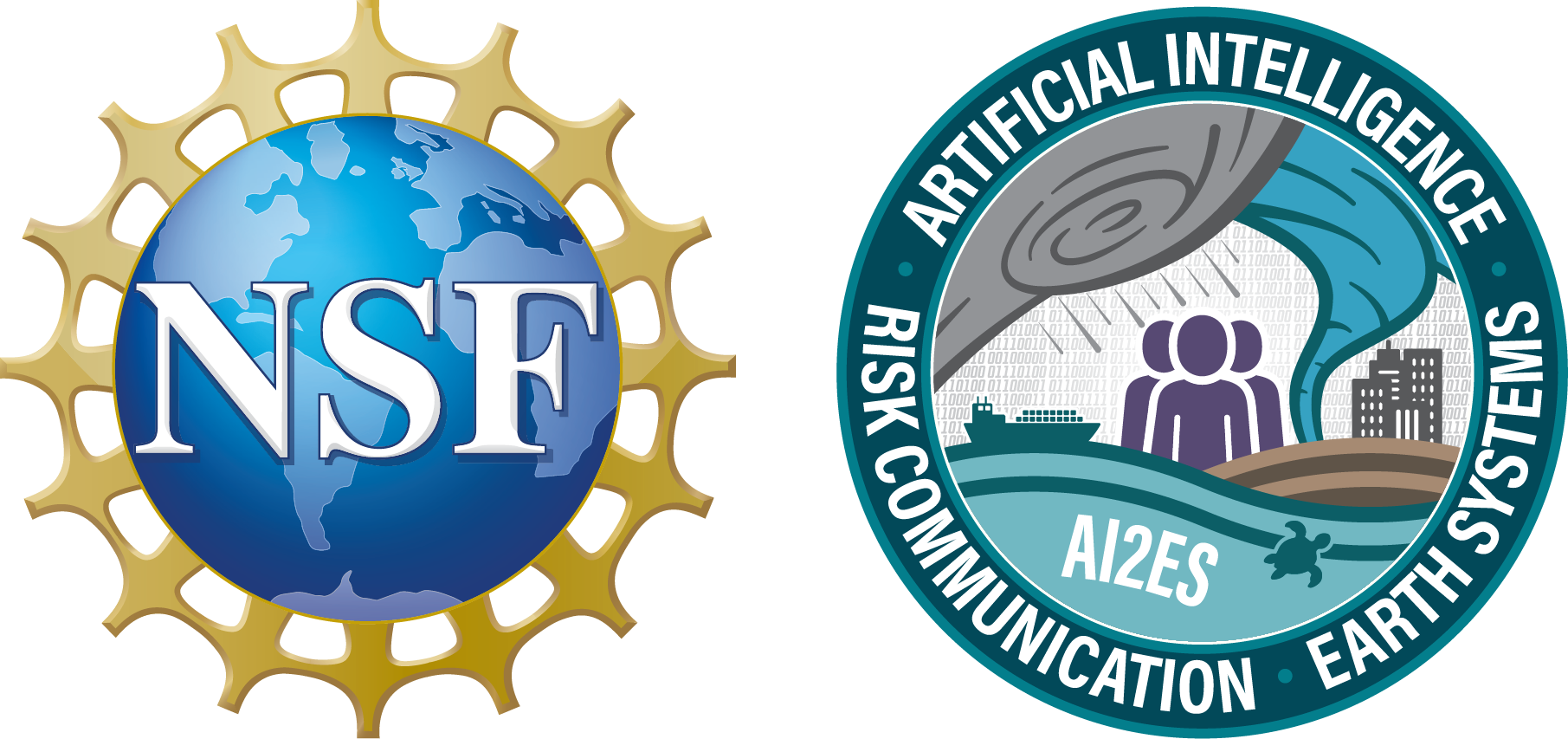Outreach
Code Repositories and Data Products
Practicing open source research for wide spread community impact.

Open Source Tools
Groundbreaking courses developed and taught by NSF AI2ES faculty addressing the most critical problems in AI and science.

Papers with Code
Open source tutorials on advanced, trustworthy AI methods for workforce retraining and support.

Educational Resources
Informative glossary of key terms related to trustworthy, ethical, and robust AI.
Open Source Tools
MILES-GUESS: Python package MILES-GUESS provides Keras and Pytorch implementations of evidential deep learning models and supports analysis of aleatoric and epistemic uncertainties. Related Project: Uncertainty Quantification for Earth System Science
Semaphore: Semaphore is a student-built and maintained Python application that semi-automates the process of operationalizing AI models. Semaphore downloads data, runs models, post-process outputs, and saves outputs. Semaphore currently takes model data in the form of .H5 files and input specifications and a DSPEC JSON. Examples of both are included in the repository. Related Project: AI Research to Operations: Semaphore
Ptype-Physical: This package contains code for generating machine learning estimates of winter precipitation type from vertical profiles of the atmosphere. Related Project: Winter Weather P-Type Analysis and Forecasts
Papers with Code
John Schreck, Yingkai Sha, William Chapman, Dhamma Kimpara, Judith Berner, Seth McGinnis, Arnold Kazadi, Negin Sobhani, Ben Kirk, David John Gagne II. Community Research Earth Digital Intelligence Twin (CREDIT), 2024. doi:10.48550/arXiv.2411.07814
I. Ebert-Uphoff, L. Ver Hoef, J. S. Schreck, J. Stock, M. J. Molina, A. McGovern, M. Yu, B. Petzke, K.
Hilburn, D. M. Hall, D. J. Gagne, S. Scheuerman. An Investigation of Metrics to Evaluate the Sharpness in AI-Generated Meteorological Imagery. Preprint.
J. C. Rothenberger and D. I. Diochnos. Meta co-training: Two views are better than one. Preliminary version presented at the Eighteenth International Symposium on Artificial Intelligence and Mathe- matics (ISAIM) 2024; currently under submission, 2023. doi:10.48550/ARXIV.2311.18083.
K. Haynes, R. Lagerquist, M. McGraw, K. Musgrave, and I. Ebert-Uphoff. Creating and evaluating uncertainty estimates with neural networks for environmental-science applications. Artificial Intelligence for the Earth Systems, 2(2):220061, Apr. 2023. doi:10.1175/AIES-D-22-0061.1
E. A. Barnes, R. J. Barnes, Z. K. Martin, and J. K. Rader. This looks like that there: Interpretable neural networks for image tasks when location matters. Artificial Intelligence for the Earth Systems, 1(3), July 2022. doi:10.1175/AIES-D-22-0001.1.
Mamalakis, A., I. Ebert-Uphoff and E.A. Barnes (2022). Neural Network attribution methods for problems in Geoscience: A novel synthetic benchmark dataset, Environmental Data Science, https://doi.org/10.1017/eds.2022.7. The benchmark data set was made available and promoted by the Radiant Earth Foundation.
Barnes, Elizabeth A. and Randal J. Barnes: Controlled abstention neural networks for identifying skillful predictions for classification problems, Journal of Advances in Modeling Earth Systems, 2021. doi:10.1029/2021MS002573.
Educational Resources
ai2es_xai_course: Python code for NSF AI2ES (NSF Institute for Research on Trustworthy Artificial Intelligence in Weather, Climate, and Coastal Oceanography) short course on XAI (explainable artificial intelligence). The main course webpage is here: https://docs.google.com/document/d/1lqpABwDl3kPe6ThE-NIDR64PimnltJEuKNkysDZuWKQ
Machine Learning Practice, Dr. Andrew Fagg, 2022: Example code, code skeletons and assignments for the Machine Learning Practice course.
Deep Learning Practice, Dr. Andrew Fagg: Code for the Deep Learning Practice course.
Advancing AI in Earth System Science Research
Join us to unlock AI’s potential in science.
